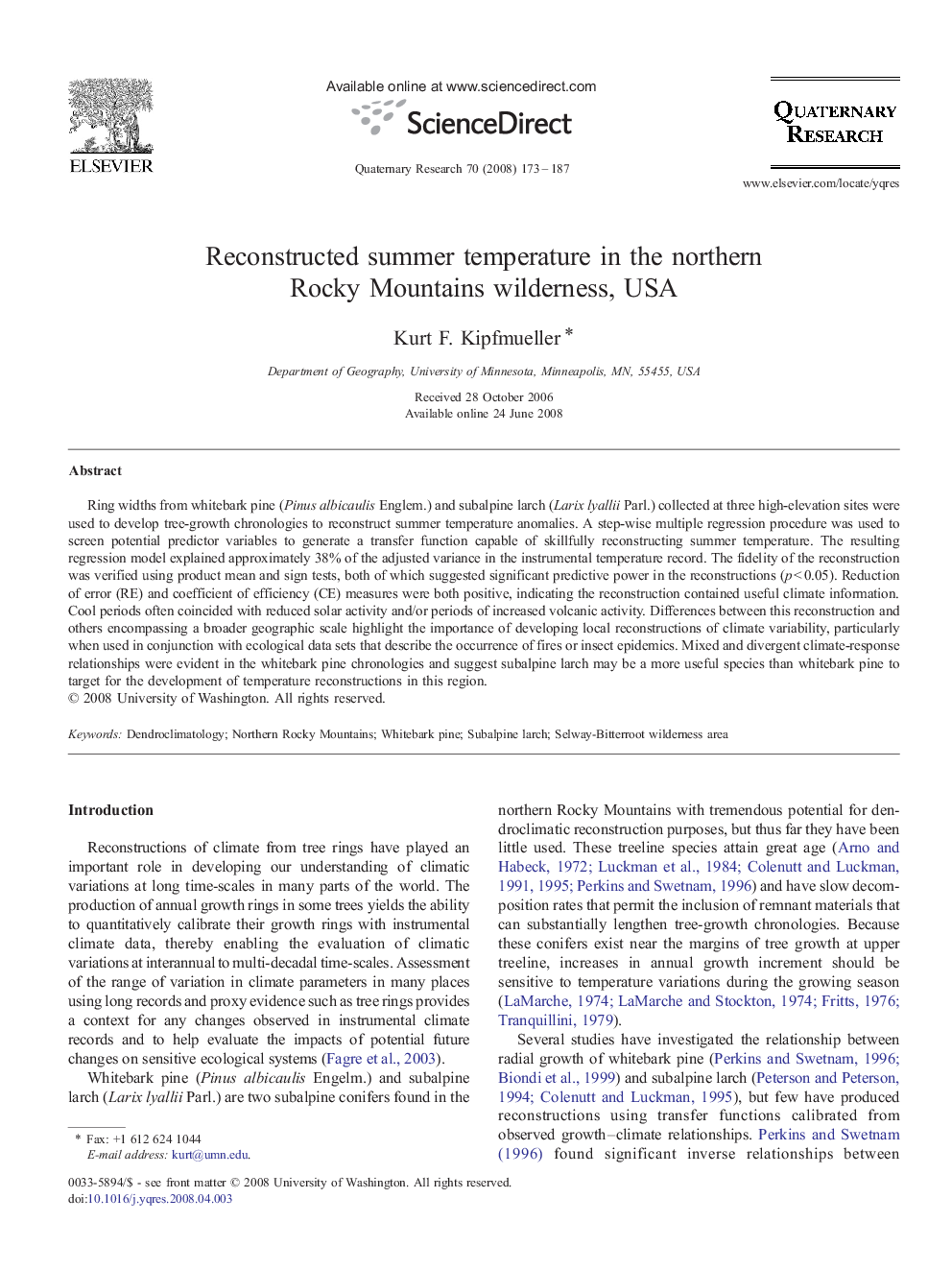| Article ID | Journal | Published Year | Pages | File Type |
|---|---|---|---|---|
| 1045701 | Quaternary Research | 2008 | 15 Pages |
Ring widths from whitebark pine (Pinus albicaulis Englem.) and subalpine larch (Larix lyallii Parl.) collected at three high-elevation sites were used to develop tree-growth chronologies to reconstruct summer temperature anomalies. A step-wise multiple regression procedure was used to screen potential predictor variables to generate a transfer function capable of skillfully reconstructing summer temperature. The resulting regression model explained approximately 38% of the adjusted variance in the instrumental temperature record. The fidelity of the reconstruction was verified using product mean and sign tests, both of which suggested significant predictive power in the reconstructions (p < 0.05). Reduction of error (RE) and coefficient of efficiency (CE) measures were both positive, indicating the reconstruction contained useful climate information. Cool periods often coincided with reduced solar activity and/or periods of increased volcanic activity. Differences between this reconstruction and others encompassing a broader geographic scale highlight the importance of developing local reconstructions of climate variability, particularly when used in conjunction with ecological data sets that describe the occurrence of fires or insect epidemics. Mixed and divergent climate-response relationships were evident in the whitebark pine chronologies and suggest subalpine larch may be a more useful species than whitebark pine to target for the development of temperature reconstructions in this region.
